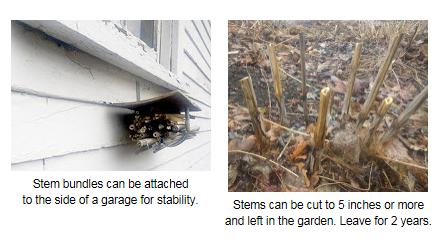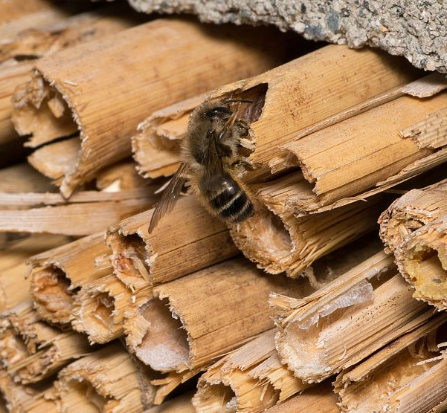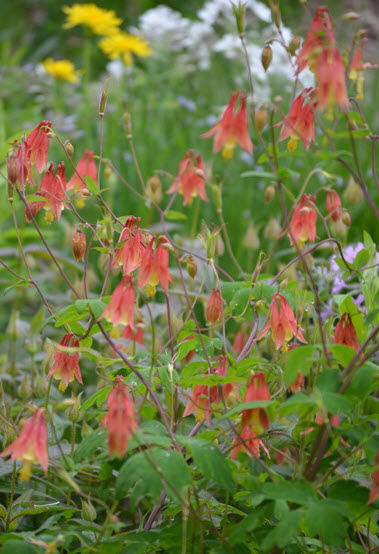Click below to listen to my 2 min. Garden Bite radio show: Creating a bee home
Audio PlayerYesterday I chatted on about neonics, today, let’s build a bee home. Let’s first establish they’re not going to sting you but don’t place them on your house either.
Certainly planting flowers is a must, but so is a nest for them. Thirty percent of bees are cavity-nesting, they’ll live in hollow stems or holes in wood. There are pre-made nests but these are often more cute than useful, says the University of Minnesota Extension’s Bee Lab.

You can use your dried plant stems. They must be dead! Not the bees, the stems. They should be dried for at least a year, they must be broken… a bee can’t cut through those sedum stems, or whatever you use. More information and a video from the University of MN.
 The stems should be between an ? to ½ an inch in diameter and 5 to 8 inches in length. Stems can be left in the ground, or can be bundled together and secured to something so they do not move or fall over. The bundle can be either horizontal or vertical.
The stems should be between an ? to ½ an inch in diameter and 5 to 8 inches in length. Stems can be left in the ground, or can be bundled together and secured to something so they do not move or fall over. The bundle can be either horizontal or vertical.
 Keep it in a partly-shaded environment out of windy areas. An important piece to know is that stems should be set out in the spring and left through the winter until the next summer, so the bees have time to develop and emerge.
Keep it in a partly-shaded environment out of windy areas. An important piece to know is that stems should be set out in the spring and left through the winter until the next summer, so the bees have time to develop and emerge.
Mason bees are one of the nesting bees. This is a comprehensive guide to bees from the University of Wisconsin. It includes bees that nest in the ground too.
And, of course, you want flowers that bees love… dandelions are a good one, seriously! Native Columbine, geranium, Giant Hyssop, Purple prairie clover, marigolds, Echinacea, Prairie Smoke…

If you really want to get wild… and you have the room… and you’re not afraid of bees, then take a peek at Modern Farmer, they show you how to make a bee hotel.
VerticalVeg also has some great suggestions for bee homes and more information.
More on bees from the Xerces Society
